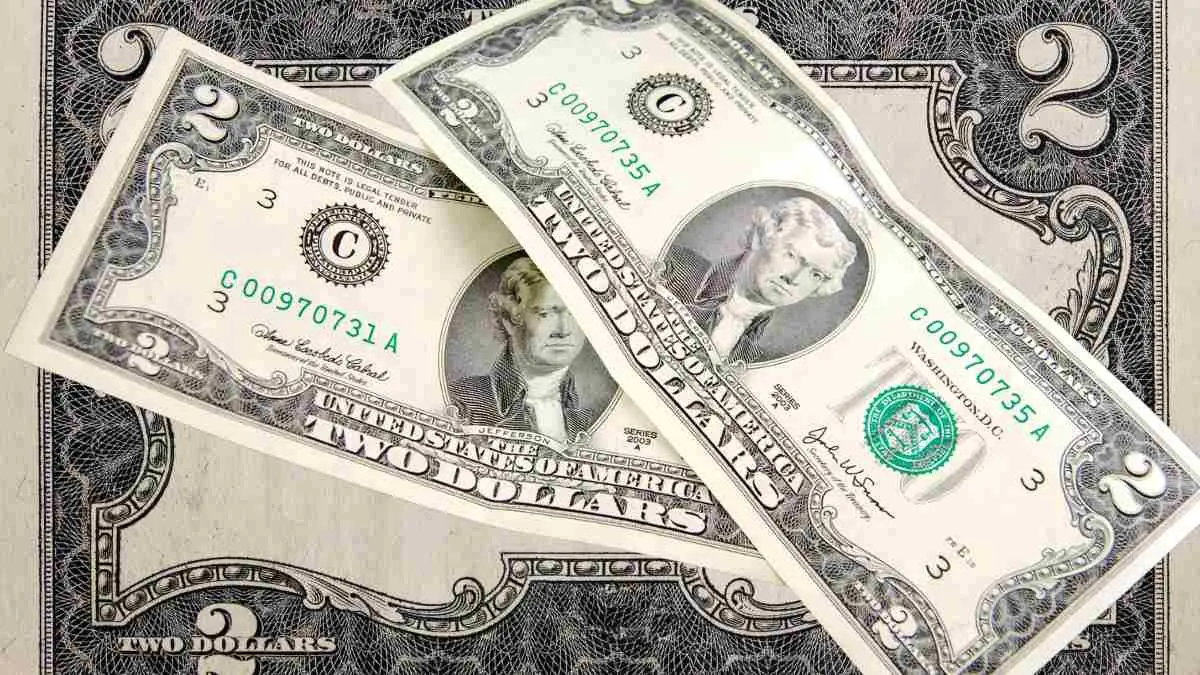While most of the bills and coins we handle hold only their face value, there are rare exceptions that can fetch thousands of dollars among collectors.
A fascinating example is certain $2 bills, which, due to their unique characteristics, can be worth up to $20,000. Let’s dive into how you can identify if you possess one of these valuable treasures.
How to check 2-dollar bills value
According to MarketWatch, some uncirculated $2 bills can reach values as high as $20,000. The key factors that influence their worth include:
- Serial Numbers
The serial number, found on the left and right sides of the bill’s front, can significantly increase its value, especially if it is preceded by a letter.
The Value of Collectible Bills: What Makes Them Special
Antiquity
Dustin Johnston, the Vice President of Heritage Auctions, remarked, “A $2 bill from 1976 with a ‘1’ serial number could be worth $20,000 or more.”
Serial numbers that are particularly interesting, such as ladder or solid numbers, are highly desirable.
- A solid number features the same digit repeated throughout.
- A ladder number showcases an ascending sequence.
Year of Issue
The age of a bill is a critical factor. For instance, bills printed before 1920 often have a value far exceeding their face value.
Rarity
The rarity of a bill depends on the total number printed in a specific year and how many of those bills remain in circulation.
Condition of the 2-dollar Bill
The condition of the bill is crucial. A crumpled bill has a vastly different value compared to one that has been meticulously preserved.
When it comes to assessing the value of banknotes, there are several factors you need to consider. According to US First Exchange, there are four distinct types of value to keep in mind when evaluating a banknote:
Types of Banknote Value
- Catalog Value: This is the average price at which most people would sell a banknote.
- Purchase Price: The amount a dealer might be willing to pay for a banknote.
- Public or Retail Value: The price at which a specific dealer would sell the banknote to a customer.
- Wholesale Value: Used among dealers when exchanging banknotes.
Understanding Banknote Value
Evaluating a banknote’s worth involves analyzing its rarity, condition, and current market conditions, especially focusing on demand. For instance, if you happen to have a 2 dollar bill, don’t overlook it—its value might be significantly higher than you think.
Keep an eye on your currency; you never know what hidden treasures you might possess! To sell any valuable coins or dollar bills contact Auction Houses like Heritage Auctions or Stack’s Bowers, grading with PCGS would be advisable.




